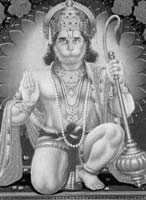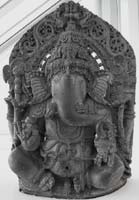December 5, 2005 – Amritapuri

“If someone were to say to you, ‘I will give you 6,000 euros if you can hatch this egg for me right now,’ would you be able to do it?” Amma asked. “Or what if they were to give you a flower bud and then tell you that they will give you such and such amount of money if you could make it blossom?”
Amma was making the point that Self-realization cannot be given; it has to come from a gradual blossoming of the heart due to effort on the part of the seeker and Guru’s grace. It cannot be forced.
“When we first started teaching IAM Meditation some people suggested that we should charge for it, because in today’s world only when you charge do people feel that they are getting something of value,” Amma said. “If you give something for free, people don’t have that feeling. But charging would be like adding water to milk. When someone sells milk, they often add water in order to make more profit. If the business aspect enters into it, it becomes diluted. When a mother breastfeeds her child, she does so only out of her love. In this way, Amma didn’t want to charge anything for IAM Meditation.”

Amma went on to explain how in some places people are charging 2000 dollars for a mantra or 6000 euros for “realization.”
“If you take an unripe fruit and press it and hit it, it will start to appear soft and ripe, but still when you eat it, it won’t be sweet,” Amma explained. “The man at the fruit-stand may benefit from it when he gets the money, but the person who buys it doesn’t get anything of value.”
Amma went on to say that in India the tradition exists where one offers something when they meet a Mahatma or a Guru, but that it should spring forth from the reverence in their heart. Amma then gave the example of how in the Upanishads it says that one should make offerings of samit, the special types of woods needed for fueling sacrificial fires. Samit is symbolic of our attachments and shows our desire for the Guru to help us go beyond these and become free.
This was one point among many that Amma was making in order to illustrate just how necessary it is for us to understand not only the essence of spirituality, but the logic behind it, as well as the manifold facets of our tradition. People who truly understand the role meditation plays in spiritual life, the concept behind offerings, and the nature of Self-realization, can never be misled by such conman and spiritual entrepreneurs.
But, alas, Amma lamented, “Ninety-eight percent of people don’t understand the principles of Sanatana Dharma.”
Other traditional practices that Amma shed light upon included why we light oil lamps before the deity in temples, why we light firecrackers during festivals, the value of Prasad, and the benefits of chanting the Vedas.
Amma also went into detail regarding the symbolism behind the forms of various Hindu gods, specifically God in the form of the elephant, Lord Ganesha, and God in the form of the monkey, Hanuman.

“These particular forms of worship arose out of the sankalpa of the Rishis,” Amma said. “So there is a particular meaning behind each and every one. If you understand Hanuman’s reverence for Sri Rama–his attitude of surrender, love and friendship–then you understand the principle that a person who cultivates these bhavas can become God. Also, just as a normal monkey jumps from one branch to another, our mind jumps over continents, even up into outer space. It can go from here to the moon in just one second.” Amma’s point was that, just like Hanuman, a human being who properly tames and trains his or her mind can come to realize their oneness with God.
Amma then explained some of the symbolism behind the form of Lord Ganesha. “The elephant’s trunk can pick up the smallest of things,” Amma said. “Like when Amma gives Ram or Lakshmi [the two Ashram elephants] a biscuit and they drop a small piece, the trunk can reach down and pick up even that. At the same time, it can also lift the heaviest of logs.”

Amma explained that this is symbolic of the need of a spiritual aspirant to cultivate an intellect capable of understanding both the gross and the subtle. Amma also said that the fact that Ganesha’s ears are wide open represents sraddha [attentive awareness] and receptivity.
“There are many deep hidden principals within these forms,” Amma said. “If we don’t understand these things, we will easily lose faith.”
Amma told everyone how a human fetus goes through a stage where it looks like a monkey, and that evolution theory says that human beings have evolved from the monkey. “In the past 2000 years no one has seen a monkey turn into a human being, yet still we believe this. We cannot accept the scriptures which say that by worshiping a monkey-god you can actually become God.”
In response to such skepticism, Amma told everyone about something she had come across during her 2004 European Tour.
“In Ireland, Amma was at a devotee’s house, and there were all these paintings there. When I looked at them, they seemed very obscure. It looked like someone had just slapped some colors up with a broom. There were random points here and there. When I asked Lakshmi [Amma’s attendant], she explained to me that this black spot means this, and this line means that… Nobody would say that the painter is an idiot. In fact, those who recognize their artistry are respected as great intellectuals. Nobody asks questions like, ‘When so many poor people are starving, how can you spend so much on these paintings?’ The pictures were worth 200,000 or half-a-million or even one million dollars. They were so expensive that they had to have security cameras and personnel there to protect them. So if you can understand the obscure symbolism behind the complicated paintings, then why can’t you understand the symbolism behind Ganesha and Hanuman?
-Sakshi
